
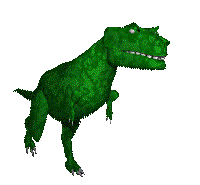
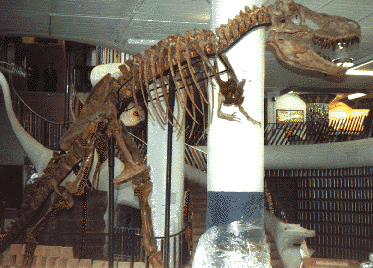
Tyrannosaurus
bataar -Maleev, 1955- skeleton of a mature specimen
Archosauria: Saurischia: Theropoda:
Tyrannosauridae
Locality: Nemagetu, Gobi Desert, southern
Mongolia
Age: Late Cretaceous (Late Campanian-Early Maastrichtian), 74 million
years ago
The
carnosaurian theropods include the largest terrestrial predators ever to have inhabited
the Earth. They began to evolve as early as the Early Jurassic or even Late Triassic
but flourished in the Late Cretaceous. At that time the largest carnosaurs of the
genus Tyrannosaurus lived in both what is now Central Asia and North America. The
Asian species Tyrannosaurus bataar (which is frequently assigned to its own genus
Tarbosaurus) is smaller than its North American relative Tyrannosaurus rex. As the
former is some more ancient than the latter, it suggests the genus could initially
have appeared in Asia and then entered North America through the wide land
bridge
connecting these continents in the Cretaceous.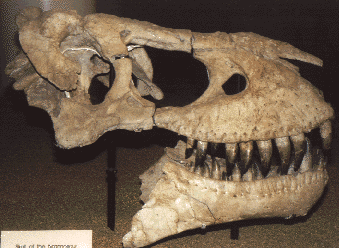
Tyrannosaurus
bataar -Maleev, 1955- skull
Archosauria: Saurischia: Theropoda: Tyrannosauridae
Locality:
Nemagetu, Gobi Desert, southern Mongolia
Age: Late
Cretaceous (Late Campanian-Early Maastrichtian), 74 million years ago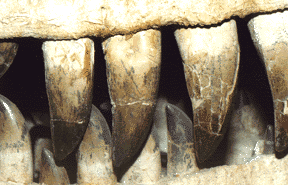
The
tyrannosaurs possessed a huge head with very large cutting serrated teeth,
very
stout and rather long hind limbs, and fore limbs greatly reduced as typical of all
carnosaurs.
Tyrannosaurus
bataar -Maleev, 1955- forelimb
Archosauria: Saurischia: Theropoda: Tyrannosauridae
Locality:
Nemagetu, Gobi Desert, southern Mongolia
Age: Late
Cretaceous (Late Campanian-Early Maastrichtian), 74 million years ago
The
brain in this tremendous animal was unbelievably tiny in comparison with body size.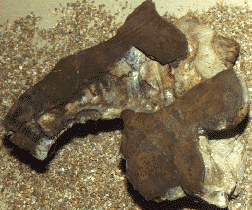
Tyrannosaurus
bataar -Maleev, 1955- braincase
Archosauria: Saurischia: Theropoda: Tyrannosauridae
Locality:
Nemagetu, Gobi Desert, southern Mongolia
Age: Late
Cretaceous (Late Campanian-Early Maastrichtian), 74 million years ago
There
is no agreement as to whether tyrannosaurids were active predators or
scavengers,
nor can scientists agree on the function of their forelimbs.
Probably, these dinosaurs
could form packs to hunt for
very large herbivorous dinosaurs, such as Saurolophus.
Thanks
to its extremely imposing appearance, Tyrannosaurus has become one of the
principals
in Speilberg's triumphal movies Jurassic Park and The Lost World.
However,
don't be confused by the title: tyrannosaurids did not live
in the Jurassic Period,
but only in the Late Cretaceous.
By the way- the famous scientist Jack Horner of the Institute of the Rockies
came to visit the exhibit in St. Louis. He is the technical advisor to Steven Spielberg.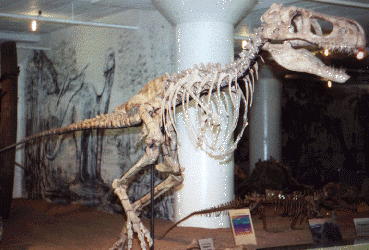
Tyrannosaurus
bataar -Maleev, 1955- cast of the skeleton of an immature specimen
Archosauria:
Saurischia: Theropoda: Tyrannosauridae
Locality: Gobi Desert,
southern Mongolia
Age: Late Cretaceous (Late Campanian-Early Maastrichtian),
74 million years ago


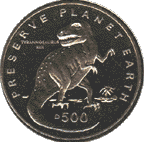
This
is a 500 Dinar coin issued by the government of Bosnia.
It is larger than a silver
dollar.


